North America Passive Radar Market Size
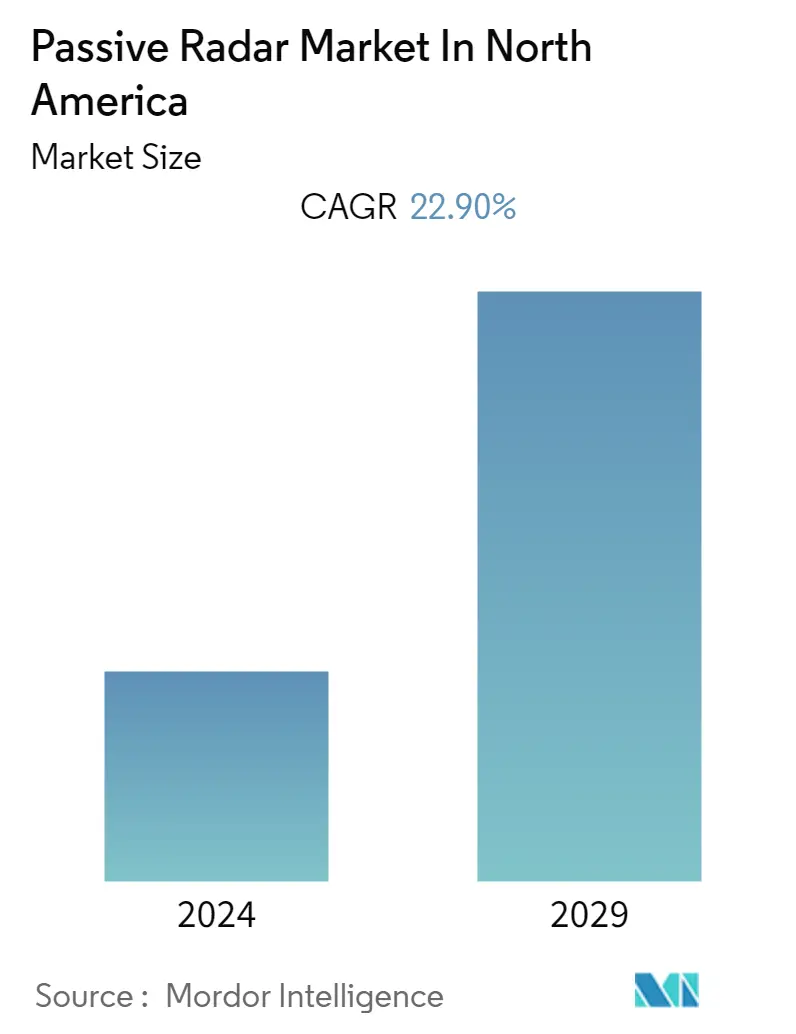
| Study Period | 2019 - 2029 |
| Base Year For Estimation | 2023 |
| Forecast Data Period | 2024 - 2029 |
| Historical Data Period | 2019 - 2022 |
| CAGR | 22.90 % |
Major Players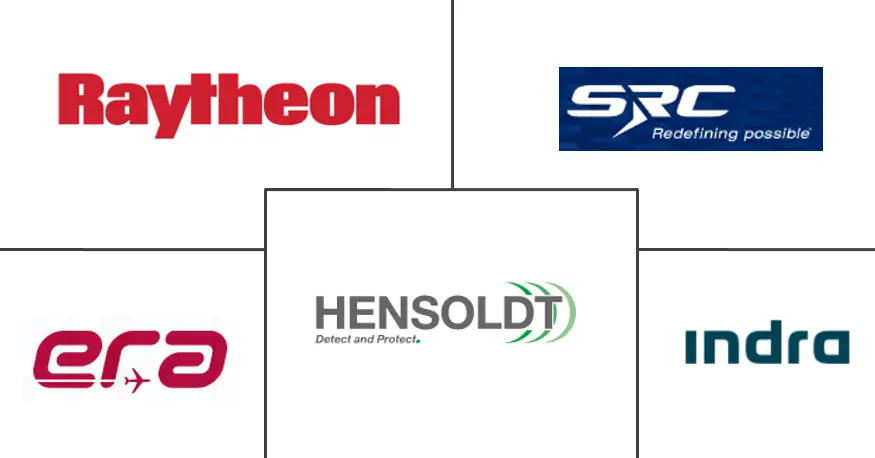
*Disclaimer: Major Players sorted in no particular order |
North America Passive Radar Market Analysis
The passive RADAR market in North America is projected to register a CAGR of 22.9% during the forecast period.
- The defense sector is expected to be the major market for the adoption of passive radar systems, to detect low flying aircraft and shape-dependent stealth aircraft, during the forecast period.
- The response speed of radar for the detected target and classifying it as a threat are likely to be the crucial factors, while the effects of noise and clutter can affect detection adversely. Additionally, the lack of enough environmental radio and electromagnetic waves in the target area can render the passive radar systems useless. This is much more evidenced by the long-practiced warfare tactics that render all signal broadcasting systems/towers as primary targets to disrupt quick dispersion of information.
North America Passive Radar Market Trends
This section covers the major market trends shaping the North America Passive Radar Market according to our research experts:
The Defense Segment Has the Largest Market Share Currently
Currently, the defense segment has the largest market share in the passive radars market in North America. The use of stealth technology in the design of newer generation fighter jets is widespread currently, and it plays a crucial role in military affairs. On the other hand, research on counter stealth threats has also gained considerable attention these days. Passive radar has advanced a long way over the past two decades, due to the advancements in technology and increased investment from the armed forces and research institutions. Few companies are developing advanced air defense systems with passive sensor systems that will offer the silent power of early warning and air situation picture without the use of active radars, to the air defense system, till it is time for engagement, thereby, reducing the risk of detection and engagement by hostile forces. The recent advancements made by China and Russia in stealth fighter jets has raised concern for the United States that has, over the past, invested more on stealth technology rather than counter stealth systems. China's J-20A and Russia's Su-57 are expected to compel the countries in the region, to opt for defensive systems, like passive radars, in the coming years.
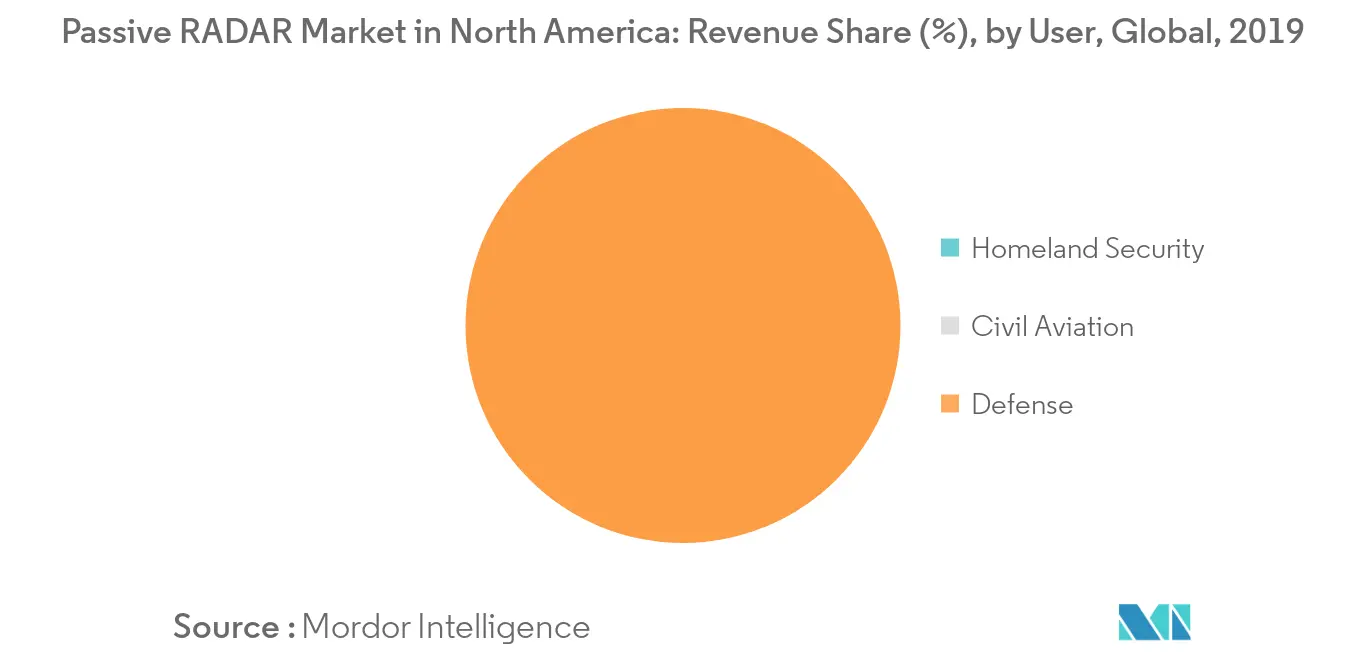
United States Currently Dominates the North American Passive RADAR Market
In 2019, the United States has the largest market share in the North American passive RADAR market. The country is also expected to continue its domination in the market during the forecast period. The United States is the largest defense spender in the world. In addition to enhancement in capabilities, the country also allocates huge sums of money in the R&D of potential technologies that can augment its battlefield capabilities. Historically, the United States has placed limited emphasis on developing passive radar systems. Nevertheless, the design and deployment of stealth aircraft by potential adversaries, like Russia and China, have encouraged investments into the development of advanced passive radar systems. The financial boost to the R&D of passive radar systems is anticipated to augment the research in passive radar technology, in the country, over the upcoming period. Raytheon has fielded several passive radars for the US military over the years. The patriot air defense system, currently in operation with the army, includes the MPQ-65A radar, which is a passive radar. The army operates more than 60 MPQ-65 radars across 15 patriot battalions. In addition to companies like Lockheed-Martin Corporation and Raytheon Company, universities and public and private entities in the country, such as the Air Force Research Labs, are keenly investing in the persistent R&D of advanced passive radar systems in the region. For instance, the researchers at the University of Washington operate a distributed passive radar exploiting FM broadcasts, to study ionospheric turbulence at altitudes of 100 km and ranges out to 1,200 km. Thus, the market in focus is expected to grow in the United States, fueled by the technological opportunities and the emergence of stealth-based threats from foreign adversaries. Also, the ongoing research, related to various potential applications of passive radars, is expected to foster the imminent growth in the adoption of passive radar technologies by both commercial and defense end users.
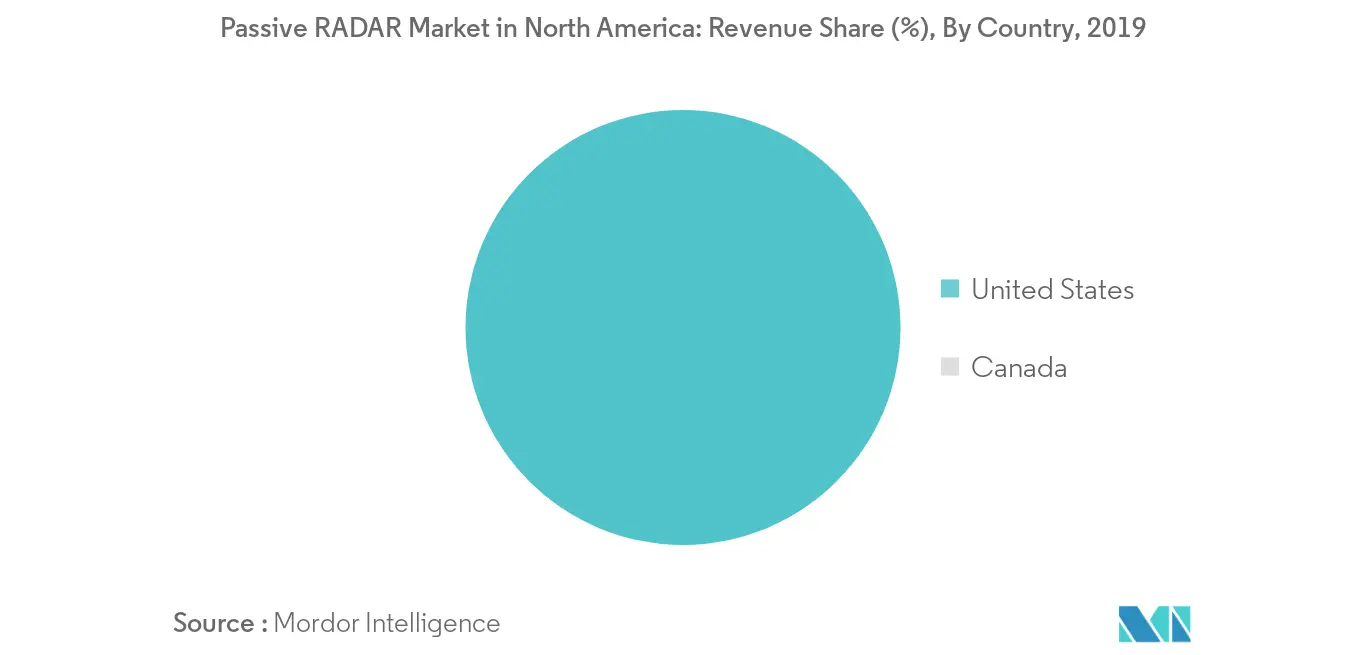
North America Passive Radar Industry Overview
SRC Inc., ERA AS (Omnipol Group), Hensoldt Holding Germany GmbH, Indra Sistemas SA, Raytheon Company are some of the major players in the market. Players are unveiling new advanced passive RADAR models that help them tap into new markets. For instance, in June 2019, ELTA Systems unveiled the Next Generation Multi-Sensor ELM-2084 MMR Radar that fuses additional ELTA sensors to the main MMR system thereby providing an active, passive, and combined Air Situational Picture (ASP) at the Paris Air Show. Such developments are expected to make the market more competitive in the years to come.
North America Passive Radar Market Leaders
-
SRC Inc.
-
ERA AS (Omnipol Group)
-
Hensoldt Holding Germany GmbH
-
Indra Sistemas SA
-
Raytheon Company
*Disclaimer: Major Players sorted in no particular order
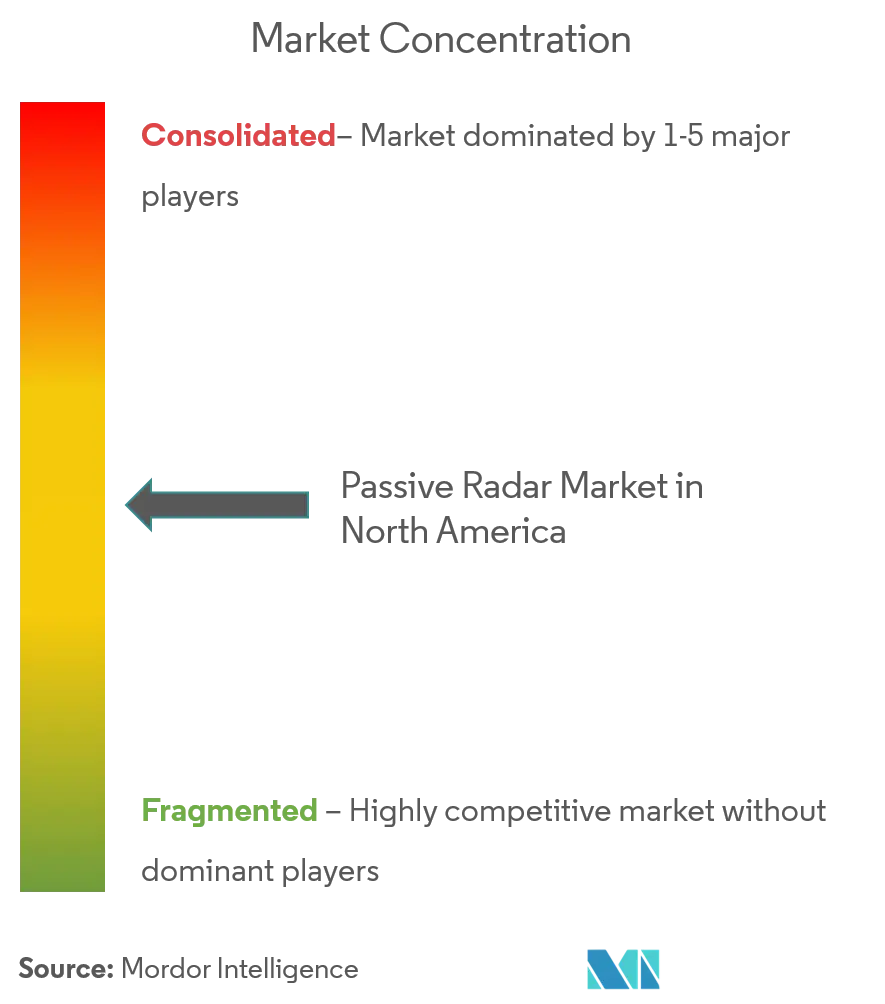
North America Passive Radar Market Report - Table of Contents
1. INTRODUCTION
- 1.1 Study Assumptions
- 1.2 Scope of the Study
2. RESEARCH METHODOLOGY
3. EXECUTIVE SUMMARY
4. MARKET DYNAMICS
- 4.1 Market Overview
- 4.2 Market Drivers
- 4.3 Market Restraints
-
4.4 Porter's Five Forces Analysis
- 4.4.1 Threat of New Entrants
- 4.4.2 Bargaining Power of Buyers/Consumers
- 4.4.3 Bargaining Power of Suppliers
- 4.4.4 Threat of Substitute Products
- 4.4.5 Intensity of Competitive Rivalry
5. MARKET SEGMENTATION
-
5.1 User
- 5.1.1 Homeland Security
- 5.1.2 Civil Aviation
- 5.1.3 Defense
-
5.2 Country
- 5.2.1 United States
- 5.2.2 Canada
6. COMPETITIVE LANDSCAPE
-
6.1 Company Profiles
- 6.1.1 SRC Inc.
- 6.1.2 ERA AS (Omnipol Group)
- 6.1.3 Hensoldt Holding Germany GmbH
- 6.1.4 Indra Sistemas SA
- 6.1.5 Israel Aerospace Industries Ltd
- 6.1.6 Leonardo SpA
- 6.1.7 Thales Group
- 6.1.8 Airbus SE
- 6.1.9 BAE Systems PLC
- 6.1.10 Raytheon Company
- 6.1.11 Ramet AS
- 6.1.12 Advanced Electronics Company
- 6.1.13 L3Harris Technologies Inc.
- *List Not Exhaustive
7. MARKET OPPORTUNITIES AND FUTURE TRENDS
** Subject To AvailablityNorth America Passive Radar Industry Segmentation
Passive radar systems do not employ their own transmitters for surveillance or detection. The study has been conducted by considering the capabilities and functionalities of passive radar systems as presented by the manufacturers.
| User | Homeland Security |
| Civil Aviation | |
| Defense | |
| Country | United States |
| Canada |
North America Passive Radar Market Research FAQs
What is the current North America. Passive Radar Market size?
The North America. Passive Radar Market is projected to register a CAGR of 22.90% during the forecast period (2024-2029)
Who are the key players in North America. Passive Radar Market?
SRC Inc. , ERA AS (Omnipol Group), Hensoldt Holding Germany GmbH, Indra Sistemas SA and Raytheon Company are the major companies operating in the North America. Passive Radar Market.
What years does this North America. Passive Radar Market cover?
The report covers the North America. Passive Radar Market historical market size for years: 2019, 2020, 2021, 2022 and 2023. The report also forecasts the North America. Passive Radar Market size for years: 2024, 2025, 2026, 2027, 2028 and 2029.
Passive Radar In North America Industry Report
Statistics for the 2024 Passive Radar In North America market share, size and revenue growth rate, created by Mordor Intelligence™ Industry Reports. Passive Radar In North America analysis includes a market forecast outlook to 2029 and historical overview. Get a sample of this industry analysis as a free report PDF download.



